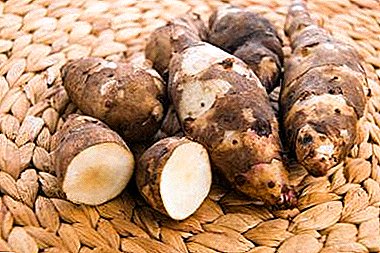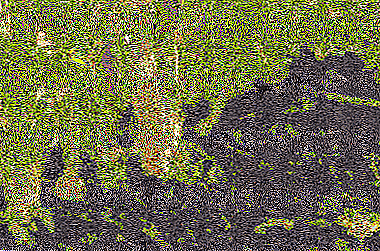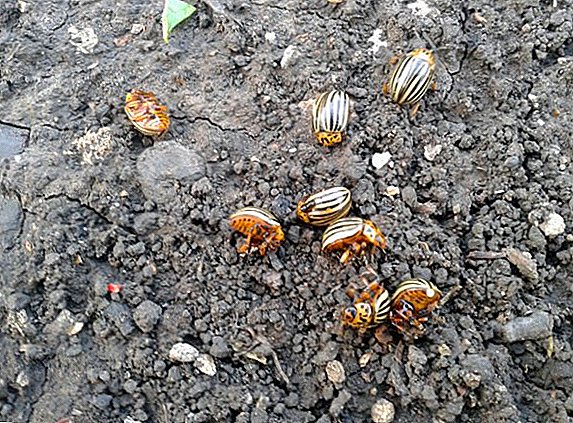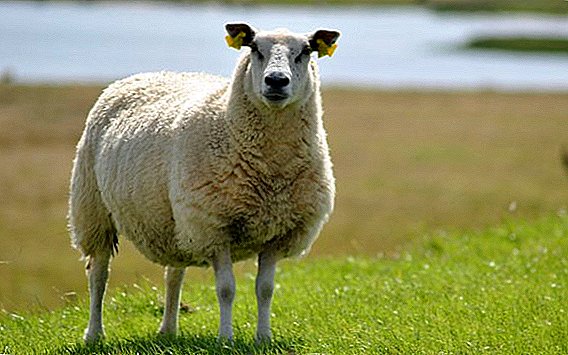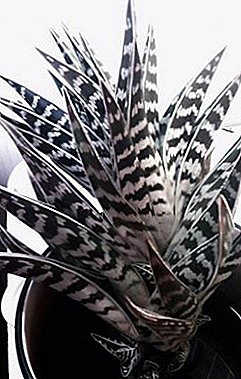 Any farmer who has calves on the farm should know “in person” the diseases that they may have. This is very important because, knowing the symptoms of possible diseases, you will be able in time to take measures to cure them or at least non-proliferation to the whole herd.
Any farmer who has calves on the farm should know “in person” the diseases that they may have. This is very important because, knowing the symptoms of possible diseases, you will be able in time to take measures to cure them or at least non-proliferation to the whole herd.
Our article will introduce you to many diseases of calves, which will allow you to avoid disastrous consequences.
Infectious diseases calves
Quite often, calves are affected by various infections due to the penetration of pathogens and viruses into the fragile organism. Consider the most common.
Anaerobic Dysentery
This disease is toxic and infectious and is very acute. Very young calves are most susceptible to infection, up to 2 weeks of age. The incubation period can be only a few hours, a maximum of 2-3 days.  Signs of. For the initial stage of the disease is characterized by liquid stools of light yellow color, then the discharge becomes thick and bloody. Sick calves all the time lie, refuse to eat and water, so the body is dehydrated.
Signs of. For the initial stage of the disease is characterized by liquid stools of light yellow color, then the discharge becomes thick and bloody. Sick calves all the time lie, refuse to eat and water, so the body is dehydrated.
Treatment. Perhaps only at the beginning of the disease. Sick animals are given subcutaneous injections of antitoxic serum, which is effective in this case. Dosage - 200-400 AE 2 times during the day.
Prevention. The use of a special vaccine to develop a stable immunity to this disease.
Colibacteriosis (escherichiosis)
This infectious disease is the first among these and causes great material damage. The incubation period is very short, not more than a day.  Signs. There are over-acute (in calves up to 3 days old) and an acute current (in calves 3 to 5 days old). The former is characterized by lethargy, fever (41-42 ° C), rapid pulse and breathing, discharge from the nose and mouth, seizures, and illness for 1–2 days. For the second, poor appetite, depression, abdominal tenderness during palpation, frothy, loose stools of light color, there may be blood clots.
Signs. There are over-acute (in calves up to 3 days old) and an acute current (in calves 3 to 5 days old). The former is characterized by lethargy, fever (41-42 ° C), rapid pulse and breathing, discharge from the nose and mouth, seizures, and illness for 1–2 days. For the second, poor appetite, depression, abdominal tenderness during palpation, frothy, loose stools of light color, there may be blood clots.
Treatment. The best remedy for this disease is antibiotics, but they must be registered as a veterinarian by the results of laboratory tests. Usually, chloramphenicol is prescribed (20 mg per kilogram of body weight initially, then 15 mg every 10 hours), biomitsin or gentamicin (15 mg per kilogram of body weight in the morning and evening). Medicines are given with water or milk. Antibiotics are used together with hyperimmune serum in the amount of 50-60 ml. Good result gives additional use of special bacteriophages.
And to restore strength, calves are advised to give instead of milk a mixture of saline in the amount of 1 liter and chicken eggs. Saline can be replaced by strong tea. Caffeine or camphor oil can be injected under the skin to support the heart.
It is also advisable to make deep enemas for calves in order to clear the intestines of toxins. Enemas are made with boiled warm water or chamomile decoction in a volume of 1-1.5 liters from a large syringe 3-4 times during the first days of treatment.
Prevention. The first thing to combat this unpleasant disease is to maintain cleanliness and hygiene. In order to prevent infestation of newborn calves, the delivery of cows and the further keeping of babies is practiced in the first hours after that, in separate rooms, so-called dispensaries.
Important! Dispensary premises should have a hard floor, better asphalt, and also supply hot and cold water.
Also for the prevention of vaccination and immunization of livestock.
Coronavirus enteritis
This disease is caused by a virus of the Coronaviridae family and is acute. Prone to young growth from 7 to 18 days. The incubation period is from 18 to 48 hours.  Signs. In sick young animals, depression is first observed, then diarrhea appears. The temperature does not rise, sometimes even below normal. The chair is liquid, the color is yellow or yellow-greenish, there are impurities of mucus and blood. Further, ulcers appear in the calf's mouth, bloating is observed. In patients, the appetite does not disappear, but they still lose weight and dehydrate. Disease duration - up to 2 weeks.
Signs. In sick young animals, depression is first observed, then diarrhea appears. The temperature does not rise, sometimes even below normal. The chair is liquid, the color is yellow or yellow-greenish, there are impurities of mucus and blood. Further, ulcers appear in the calf's mouth, bloating is observed. In patients, the appetite does not disappear, but they still lose weight and dehydrate. Disease duration - up to 2 weeks.
Treatment. It consists of the management of hyperimmune sera and convalescent sera. Their distinguishing feature is that they have antibodies to this disease, as well as antibacterial and immunostimulating components. Additionally used probiotics. Bifidumbacterin and Laktobifadol have proven themselves well. Also, veterinarians can prescribe symptomatic treatment.
Prevention. Vaccination and immunization are carried out with appropriate preparations. Also important are the cleanliness of the places where cattle are kept and their timely disinfection. If there are registered cases of this disease nearby, then it is necessary to limit the movement of animals and enter quarantine.
It will also be useful for you to learn how to choose the right calf when buying, what vitamins the calves need for rapid growth, how much the calf should weigh at birth and for months.
Cryptosporidiosis
This disease is quite often found where cattle are bred, that is, almost all over the world. Called by the simplest parasites, which are highly resistant to disinfectants, temperatures, and multiply rapidly.  The incubation period is from 3 to 7 days. Individuals aged 1 to 3 weeks old can become ill.
The incubation period is from 3 to 7 days. Individuals aged 1 to 3 weeks old can become ill.
Signs. The first symptoms of this disease are refusal to eat and depression. Then diarrhea appears, the discharge has a grayish-yellow or yellow-orange color. The body is quickly dehydrated, exhaustion sets in, and calves have eyes sunk. In laboratory studies, very often the pathogens of this disease coexist with other pathogens.
Treatment. Unfortunately, quite effective treatments have not been established. Symptomatic and pathogenetic therapy is usually prescribed. Additionally, you need a diet and drugs that help restore the water-salt balance (aqueous solutions of sodium chloride, sodium bicarbonate, potassium chloride and glucose as a drink).
Prevention. The main method - the observance of cleanliness of premises and equipment, animal hygiene. It is also necessary to check the staff for the content of pathogens of this disease in feces.
Paratyphoid (salmonellosis) calves
If such a disease struck your calves, then this indicates poor conditions: high humidity, lack of ventilation, and dirt.  Signs. Initially, the disease proceeds without symptoms. But after a week, the acute stage begins, which is characterized by an increase in temperature (up to 41 ° C), loss of appetite, rapid breathing and pulse. In rare cases, diarrhea can begin with blood.
Signs. Initially, the disease proceeds without symptoms. But after a week, the acute stage begins, which is characterized by an increase in temperature (up to 41 ° C), loss of appetite, rapid breathing and pulse. In rare cases, diarrhea can begin with blood.
Important! If your calf eats and drinks badly, it is sluggish and depressed, then it is better not to postpone the visit to the vet. Symptoms of infectious diseases can coincide, and they can be sorted out only with the help of thorough diagnostics and laboratory tests.Treatment. It consists in the introduction of antiparatypical serum. Calves are also given biomitsin, biovetin and furazolidone (the dosage is based on the weight of the animal). The specific bacteriophage is successfully applied.
Prevention. Necessary conditions of detention, which will ensure cleanliness, normal humidity and ventilation. It is recommended to give calves acidophilus or propomitselin directly from the first day, first in a volume of 50-100 ml, and then gradually increase the amount to 1 liter for 2 weeks. These supplements are usually given as a drink, and older calves can be mixed into the feed.
Pasteurellosis
This disease occurs in almost all members of domestic animals, but cows, rabbits and poultry are particularly common.  Signs. This insidious disease has several forms, and their symptoms differ from each other.
Signs. This insidious disease has several forms, and their symptoms differ from each other.
There are such forms:
- Sharp - fever, depression, constipation in the initial stage, nosebleeds.
- Subacute - fever, cough, nasal discharge contain pus. Observed swelling in the neck and head.
- Super sharp - A sharp increase in temperature, diarrhea with blood. Very often accompanied by pulmonary edema and heart problems,
- Chronic - Protracted diarrhea, due to which exhaustion occurs. May last up to 3 months.
Treatment. With the appearance of the first signs of illness, the calf should be placed in a room where it is warm and dry. Also provide it with good nutrition. Of the drugs used antibiotics. There is also a serum against this disease in veterinary medicine, but it is used only at the initial stage of an ultra-acute form (at the first symptoms).
Prevention. The surest way to protect your flock from this disease is to use a vaccine.
Important! The vaccine against pasteurellosis will be effective for 6 months.
It is also necessary to avoid contact with other animals, to observe hygiene.
Non-contagious diseases
The list of diseases that can not be infected is also quite extensive. But unlike infectious diseases, they do not cause great damage to the livestock of cattle and do not require the introduction of quarantine.
Did you know? In order to distinguish between cows, they are stigmatized. But, as it turned out, the horned have a unique pattern on the nose, like fingerprints on a person’s hands. And in the Berlin Society for the Support of Applied Informatics, they made a device that automatically recognizes cows on the nose.
Bezoar disease
This disease can occur in calves who are weaned from the mother. The animal in the abomasum forms lumps (bezoars) from wool, plant fibers and casein.  Signs. Calves with such a disease lag behind others in development, they are weak and thin, their skin is dry and inelastic, there is a problem with wool. Sick individuals lick wool and urine. Diarrhea may occur.
Signs. Calves with such a disease lag behind others in development, they are weak and thin, their skin is dry and inelastic, there is a problem with wool. Sick individuals lick wool and urine. Diarrhea may occur.
Treatment. Veterinarians usually prescribe drugs that saturate the body with essential minerals and vitamins. These include, for example, the dry supplement Biotan 3Z produced in Bulgaria (added to food) or the MI Forte PLUS complex made in Poland in liquid form (added to drink). Also needed additional tools that help the process of digestion.
Prevention. It is very important to strictly observe the feeding technology and keep the livestock clean. In addition, the calves must move sufficiently. There must be clean drinking water.
White muscle disease
Another name is muscular dystrophy. May occur in young age just a few days and in the cold period.  Signs. Sick calves are weak, depressed, they have a muscle tremor. Their movements are wrong, periodically there are convulsions and paralysis. Pale mucous, breathing fast.
Signs. Sick calves are weak, depressed, they have a muscle tremor. Their movements are wrong, periodically there are convulsions and paralysis. Pale mucous, breathing fast.
Treatment. To solve the problem it is necessary to take selenium, tocopherol, sulfur-containing amino acids, protein hydrolysates and trivitamin.
Learn more about how to treat white muscle disease in calves.
Prevention. So that newborn calves do not have this ailment, it is recommended that cows that bear the offspring be introduced into the diet of selenium and tocopherol.
Bronchopneumonia
Such a disease most often occurs in the cold months of the year due to inadequate conditions for keeping young stock (dampness, drafts, lack of ventilation, poor litter, etc.).  Signs. In a sick calf, there is difficulty breathing with a cough, the temperature rises (40-42 ° C). There may be discharge from the nose and eyes, diarrhea.
Signs. In a sick calf, there is difficulty breathing with a cough, the temperature rises (40-42 ° C). There may be discharge from the nose and eyes, diarrhea.
Treatment. Patients should be kept separately in warm rooms, to receive enhanced nutrition. Of the drugs it is advisable to use antibiotics and sulfa drugs. Good results show certified veterinary means "Nitoks-200" and "Floridox", which are administered intravenously.
Learn how to treat bronchopneumonia in calves.
Prevention. As a rule, if the right conditions are created, calves are well-groomed and get good nutrition, then diseases such as bronchopneumonia do not occur.
Gastroenteritis
This pathology happens when using poor-quality feed and sour milk and is manifested by indigestion.  Signs. Long-term diarrhea.
Signs. Long-term diarrhea.
Treatment. Medicines are not needed. It is necessary to water the calf with a 1% aqueous solution of salt (boiled water) up to 6 times during the first day. On the second day, the salt solution is diluted with milk (1: 1), and by the third days it increases the amount of milk to normal.
Prevention. To avoid such stomach disorders, it is necessary to monitor the quality of feed and the freshness of milk.
Hernia
This pathology may occur due to injury or for hereditary reasons.  Signs. In the initial stage of a hernia can be detected by external examination of the calf in the form of a small protrusion in the navel. Further symptoms appear more serious: the animal is in pain, loses its appetite, becomes restless, there are problems with the stool. Perhaps a slight increase in temperature.
Signs. In the initial stage of a hernia can be detected by external examination of the calf in the form of a small protrusion in the navel. Further symptoms appear more serious: the animal is in pain, loses its appetite, becomes restless, there are problems with the stool. Perhaps a slight increase in temperature.
Important! Hernia size up to 3 cm is not dangerous, but requires observation. The problem may disappear by itself by 1 year. But if it has not disappeared, then it is necessary to engage in treatment.
Treatment. There are 2 ways: conservative and surgical. The first is practiced for minor problems and is that the hernia is manually reset and fixed. In more complicated cases, the calf will have to be delivered to the veterinary clinic and left there for a few days for surgery.
Prevention. Periodic inspection of young stock will help identify pathology in the early stages and take action before the onset of serious symptoms.
Tympany
The second name for the disease is bloating. Problems arise during the transfer of young stock to juicy and coarse food, as well as when feeding low-quality products.  Signs. Swelling left side, shortness of breath and loss of appetite.
Signs. Swelling left side, shortness of breath and loss of appetite.
Treatment. Massage is performed on the site of swelling with a fist until burping occurs or gases escape. Next, a sick animal is given a vegetable oil or castor oil (100-150 g). Be sure to walk the calf at least half an hour.
Prevention. Limit livestock walking in places where there is a lot of alfalfa, especially when it rained or dew fell. Do not water the animals immediately after they have eaten concentrates or green grass.
Rickets
The presence of this pathology indicates a lack of vitamin D due to the content of young stock in dark and damp barns or the lack of a sufficient number of walks in the fresh air.  Signs. The growth of young individuals slows down, bones become bent and thinner.
Signs. The growth of young individuals slows down, bones become bent and thinner.
Treatment. Apply therapeutic doses of vitamin D (from 700 to 5000 IU, depending on age and breed), fish oil (15 g per day), chalk (10-15 g per day), bone meal (from 3 to 5% of the total mass of feed ), which are simply added to feed or drink. Be sure to pour the usual table salt in the feeders - the calves will eat as much as they need. It is necessary to use all these additives until the signs of rickets disappear, and preferably in the cold period of the year.
Prevention. Proper care and balanced nutrition.
Parasitic diseases of calves
Diseases caused by parasites are very insidious. They in a short time can destroy the animal, the carcass of which is almost always necessary to destroy. And sometimes such diseases carry a double danger, since parasites can carry pathogenic viruses and bacteria.
Skin gadfly
This harmful insect lays its offspring in the form of eggs on the fur. These parasites love tender calf skin, as it is thinner than in adult animals. After several days, the larvae emerge from the eggs and go deep into the skin. There is their maturation.  Signs. In places where the larvae have settled under the skin, bulges appear. Most often they are localized in the back area. These parasites deliver calves with many unpleasant feelings, often painful. Therefore, infected animals behave restlessly, trying to get rid of uninvited guests.
Signs. In places where the larvae have settled under the skin, bulges appear. Most often they are localized in the back area. These parasites deliver calves with many unpleasant feelings, often painful. Therefore, infected animals behave restlessly, trying to get rid of uninvited guests.
Treatment. After making an accurate diagnosis, veterinarians prescribe the use of a special insecticide in doses that correspond to the age of the calf and the strength of the lesion.
Prevention. There are no methods of prevention against this parasite, because gadflies are constantly circling over a herd of cows. The main thing is to examine the skin of animals for the presence of tubercles, especially in the warm season.
Did you know? Cows are usually accompanied by a flock of flies, which gives the horned a lot of trouble. To get rid of these insects invented special tools, impregnated with insecticides: they are attached to the horned ears as earrings and scare away annoying flies all summer.
Scabies
Called by a parasite called a scabies mite that penetrates the skin.  Signs. In places of penetration the skin becomes inflamed, itching appears. Then the wool falls out, and a crust appears instead. Animals constantly itch, may even increase the temperature. If you start the disease, the animal will begin to lose weight.
Signs. In places of penetration the skin becomes inflamed, itching appears. Then the wool falls out, and a crust appears instead. Animals constantly itch, may even increase the temperature. If you start the disease, the animal will begin to lose weight.
Treatment. The lesions are treated with a special ointment, most often sulfuric or ichthyol, as well as Vishnevsky's liniment.
Prevention. Special methods are not developed. The most important thing is the timely visual inspection of the entire livestock. Если есть подозрения на чесотку, необходимо таких животных изолировать и лечить.
Important! When caring for calves and adults, it is necessary to take into account the fact that itch parasitizes on human skin.
Coccidiosis
Caused by coccidia, which are parasitic in the intestines. Such a disease is a faithful companion of those households that keep cows in poor conditions, are insufficiently fed and do not follow sanitary and hygienic rules. Usually, calves are sick up to six months. Adults in most cases are simply carriers of this type of parasite.  Signs. Initially marked diarrhea. The stool is thin, sometimes with blood, may involuntarily drain. The calf is lethargic, emaciated, eats poorly. Possible increase in body temperature.
Signs. Initially marked diarrhea. The stool is thin, sometimes with blood, may involuntarily drain. The calf is lethargic, emaciated, eats poorly. Possible increase in body temperature.
Treatment. It is possible to confirm the presence of this particular disease only by the results of a microscopic examination of the feces of sick calves. As medicines, ammonium sulphate (up to 5 g per 1 calf), diluted in milk, and the use of thymol (15 g) and ichthyol (5 g) also with milk or water are recommended.
Prevention. It is recommended to keep young calves separate from the rest of the herd. It will require timely cleaning and disinfection of the barn, feeders and drinkers, replacement of bedding, washing floors 1 time in 7 days with boiling water with caustic soda,
Dictyokaulez
Called nematodes parasitic in the respiratory tract of the animal. Most often, young people are sick at the age of 4-18 months. The disease is seasonal - mostly sick in the summer.  Signs. Cough, loss of appetite, lethargy, temperature rises to 40 ° C. The animal loses weight and tries to lie more.
Signs. Cough, loss of appetite, lethargy, temperature rises to 40 ° C. The animal loses weight and tries to lie more.
Treatment. The diagnosis of dictyocaulos can be made only by conducting laboratory tests. If it is confirmed, the treatment is carried out with an aqueous solution of iodine (injected into the trachea), but only under the supervision of veterinary specialists.
Prevention. Strict observance of sanitary-hygienic measures in relation to the premises, feeding places and walking of young animals.
In conclusion, we note that many diseases in calves are caused by inadequate housing conditions, poor care, poor-quality feeding. Therefore, if you are breeding cattle, then first of all stick to sanitary and hygienic rules.
This will help prevent, if not all, many diseases and avoid losses.



